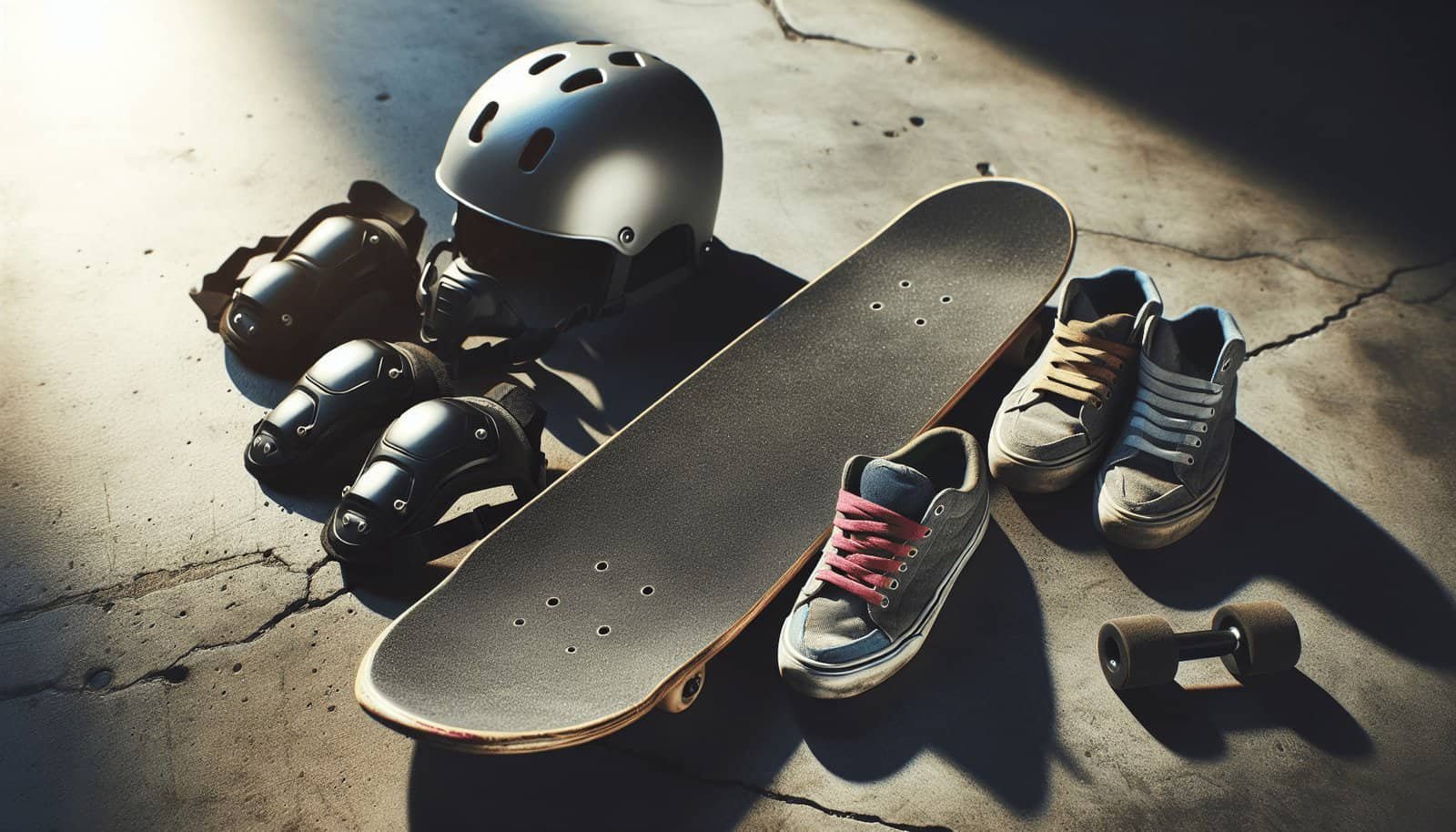Have you ever wondered how you can continue skateboarding while minimizing the risk of injury? It’s a thrilling sport, but like any physical activity, it comes with its fair share of risks. Taking some proactive steps can significantly reduce the chances of getting hurt. Let’s discuss how you can handle injuries in skateboarding and explore some common preventive measures to keep you safe.
Understanding Skateboarding Injuries
Skateboarding is an exhilarating activity that combines skill, balance, and a touch of bravado. Yet, it also poses certain risks that could lead to injuries if not approached with caution. Understanding these risks and knowing how to manage them is crucial for your safety and enjoyment.
Common Types of Injuries
When it comes to skateboarding, the most common injuries are sprains, strains, fractures, and abrasions. Here’s a closer look at what these terms mean and how they might manifest while you’re showing off your tricks:
Sprains and Strains: These are often the result of overstretching muscles or ligaments, and they’re quite common if you land awkwardly.
Fractures: Falling can sometimes lead to broken bones, especially in the arms and wrists, since these are the body parts you instinctively use to break a fall.
Abrasions: Given the hard surfaces you’re skating on, skin scrapes are almost inevitable with falls. While often minor, they can be painful and require cleaning to avoid infections.
Head Injuries: The risk of concussions is significant, particularly if you skate without a helmet.
Why Prevention is Key
Injuries, while part of the sport, should not become the norm. Preventive measures can go a long way in ensuring that you enjoy skateboarding with minimal interruptions. The goal here is to skate smarter, not necessarily harder. Prevention can also save you from potential downtime due to injuries, allowing you to keep practicing and improving your skills.

Preventive Measures for Skateboarding
Skateboarding safely involves more than just wearing the right gear. It also requires proper technique, adequate preparation, and awareness of your environment. Here’s how you can take preventive measures to avoid injuries.
Wear Proper Protective Gear
One of the simplest yet most effective ways to prevent injuries is by wearing protective gear. Having the right equipment can buffer impacts and reduce injury severity.
| Gear | Purpose | Recommendation |
|---|---|---|
| Helmet | Protects your head from impacts | Look for a helmet with a certification like ASTM or CPSC |
| Wrist Guards | Prevents wrist fractures by stabilizing the joint | Choose ones that offer good flexibility and movement |
| Knee and Elbow Pads | Shields these joints from abrasions and impacts | Opt for pads with a hard outer shell and soft interior |
| Proper Footwear | Ensures foot stability and support | Skate shoes with good grip and cushioning are ideal |
Learn Proper Techniques
Understanding the right techniques can drastically decrease your risk of injury. Start with the basics and progressively build your skillset.
- Foot Placement: Make sure your foot positioning is solid. Having the right foot placement can help maintain balance and control.
- Controlled Falls: Learn how to fall correctly—try to roll out of falls rather than absorbing the impact directly.
- Speed Management: Know how to control your speed, especially when attempting new tricks. Most injuries happen because of an inability to manage speed or a sudden stop.
Know Your Limits
Understanding and respecting your limits is crucial. While pushing boundaries is part of the sport, do so cautiously to avoid unnecessary risks.
- Skill Level: Stick to tricks and terrains that match your skill level. As you become more proficient, gradually attempt more complex moves.
- Physical Limitations: If you’re feeling tired or sore, listen to your body and take a break. Pushing through will increase your risk of injury.
Regular Warm-Ups and Conditioning
A good warm-up routine prepares your body for physical activity, reducing the likelihood of strains or sprains.
- Stretching: Focus on dynamic stretches for your legs, arms, and core. Stretching improves flexibility and helps prevent muscle strains.
- Light Cardiovascular Activity: Engage in light jogging or jumping jacks for about 5-10 minutes to get your heart rate up.
Incorporate a conditioning program that targets overall strength, especially in the legs and core, as these are crucial for balance and maneuverability.

Handling Skateboarding Injuries
Even with precautions, injuries can still occur. Knowing how to handle them efficiently can make a significant difference in your recovery time and effectiveness.
Immediate Actions Post-Injury
- Stop and Assess: Immediately stop skating if you feel you’ve injured yourself. Continuing might make the injury worse.
- Apply the R.I.C.E Method:
- Rest: Give the injured area time to heal.
- Ice: Apply ice packs to the injured area for 15-20 minutes to reduce swelling.
- Compression: Use a bandage to apply light pressure, further reducing swelling.
- Elevation: Keep the injured limb raised above heart level when sitting or lying down.
When to Seek Medical Attention
While some injuries can be managed at home, there are certain signs that indicate you need professional medical help.
- Severe Pain or Swelling: If swelling and pain do not subside after a day or two.
- Inability to Move: If you’re unable to move the injured area naturally.
- Visible Deformity: Such as bone protrusion or dislocation.
Rehabilitation Processes
Once the acute phase of an injury is managed, rehabilitation is the next step. It focuses on gradually restoring the injured area to its pre-injury status.
- Physical Therapy: A therapist can provide exercises tailored to building strength and flexibility in the injured area.
- Gradual Return: Start with basic movements before progressing to more intense skateboarding activities.
- Monitor Progress: Keep track of your recovery progress and adjust your training accordingly.

The Psychological Aspect of Recovery
Injury recovery isn’t just physical; it’s mental too. It’s essential to stay positive and motivated throughout your recovery journey.
Coping Mechanisms
Engage in activities that can help maintain your mental health while you’re off the board.
- Mindfulness and Meditation: These can help manage stress and maintain focus.
- Goal Setting: Set realistic short-term goals to track your progress and keep motivated.
Staying Engaged with the Sport
While recovering, find other ways to stay engaged with skateboarding. This could be through watching skate videos, learning about different techniques, or even visualizing your recovery and return to skating. Keeping your passion alive will make your return all the more rewarding.

Embracing Skateboarding Safely
Skateboarding will always carry a risk of injury, but with the right preventive measures and a smart approach to handling injuries, you can greatly reduce this risk while prolonging your active involvement in the sport. Embrace these strategies, and continue to enjoy the exhilaration that comes with mastering new tricks, all while taking good care of yourself. Skate smart, stay safe, and most importantly, have fun on your board!

